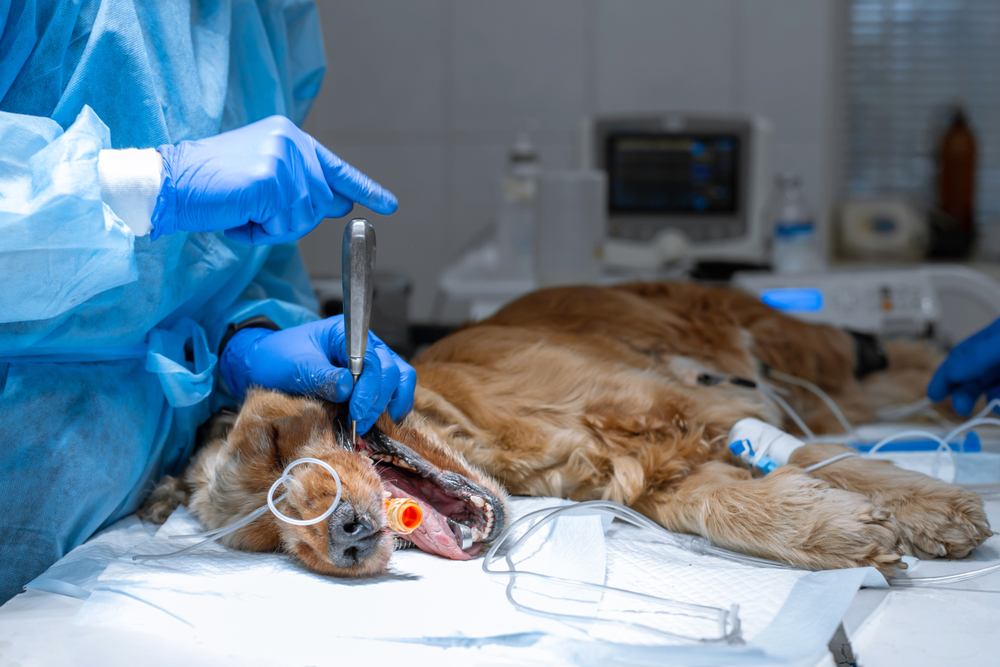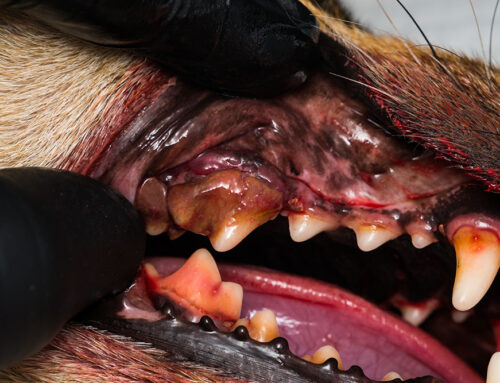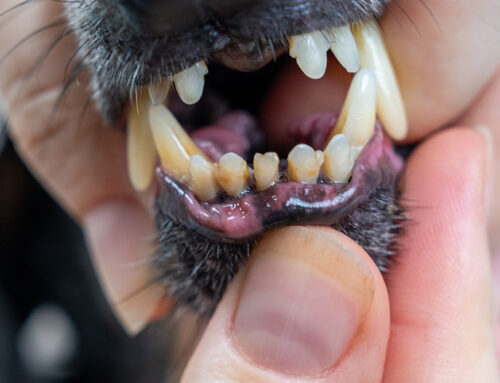Jaw fractures in dogs and cats can be painful and debilitating, affecting your furry pal’s ability to eat, groom, play, and chew. Most jaw fractures require treatment from a specialized surgeon or veterinary dentist to restore proper function. Our North Bay Veterinary Dentistry team knows that creative problem-solving is the name of the game when treating jaw fractures because each injury is unique. We offer multiple treatment options, alone or in combination, to ensure each pet who suffers a broken jaw has the best possible outcome.
Understanding jaw fractures in pets
Jaw fractures can involve the upper jaw (i.e., maxilla) or lower jaw (i.e., mandible), and these injuries can vary greatly in severity. Some jaw fractures cause only a crack, leaving the bones remaining relatively well-aligned, while other injuries create instability and displacement. Common jaw fracture causes include trauma from falls, accidents, or animal bites, or they can occur secondary to dental disease, oral tumors, or complicated dental extractions. Signs your pet may have a jaw fracture include difficulty eating, obvious deformity, bleeding, drooling, swelling, or pain.
Jaw fracture diagnosis and evaluation in pets
Seek veterinary care immediately if your pet sustains trauma, even if you can’t see obvious injuries. Your primary or emergency veterinarian will perform a thorough physical exam and order imaging tests to check for head, face, and internal organ injuries. For suspected jaw fractures, the attending veterinarian may refer your pet to our facility after treating other injuries and stabilizing your pet’s overall condition. At our facility, we can perform a detailed evaluation under anesthesia using cone beam computed tomography (CT) and intraoral X-rays to locate and characterize jaw fractures. These advanced imaging techniques allow us to see exactly how the jaws and teeth are affected by the fracture and determine the most effective treatment.
Jaw fracture treatment for pets
Once we understand the nature of a pet’s jaw fracture, we devise a treatment plan. Jaw fracture treatment’s goal is to stabilize the area while still allowing the pet to eat and drink during recovery. This can involve one or more of the following techniques:
- Bandaging — In some cases, light support with a loose muzzle or tape can allow healing.
- Orthodontic devices and oral splinting — Using a pet’s teeth as anchors, we can fashion stabilizing devices from orthodontic elastics and custom acrylic splints in the mouth.
- Suturing — Strategic suture placement around the lower jaw or in the hard palate can realign some displacement injuries.
- Dental extraction — Teeth near a fracture site are often damaged and must be removed to allow for the jawbone to heal.
- Surgical fixation — When an internal splint doesn’t provide the necessary stabilization, plates, wires, and external devices can be placed surgically.
- Nutritional support — If a pet’s injury requires jaw immobilization, they may require a softened diet or temporary feeding tube.
Postoperative care and recovery for pets with jaw fractures
Postoperative care is crucial to your furry pal’s jaw fracture recovery. After your pet’s jaw has been stabilized or repaired, you must ensure your furry pal is getting adequate nutrition and alert our veterinary team if you notice your pet is struggling or refusing to eat. We also recommend you closely monitor your pet’s overall condition during the days after surgery to ensure they are fully recovered from other injuries that may have occurred at the time of trauma. Administer pain medications and antibiotics as directed and schedule follow-up visits at the recommended intervals to ensure healing is on track.
Jaw fractures in dogs and cats can be challenging injuries to treat, but our North Bay Veterinary Dentistry team has the experience and equipment to create custom treatment plans for each unique case. We work closely with you and your primary veterinarian to support your furry pal during their healing journey. Contact us to schedule a consultation if your pet requires advanced imaging and treatment for a jaw fracture or if you have any other concerns about their oral health.






Leave A Comment